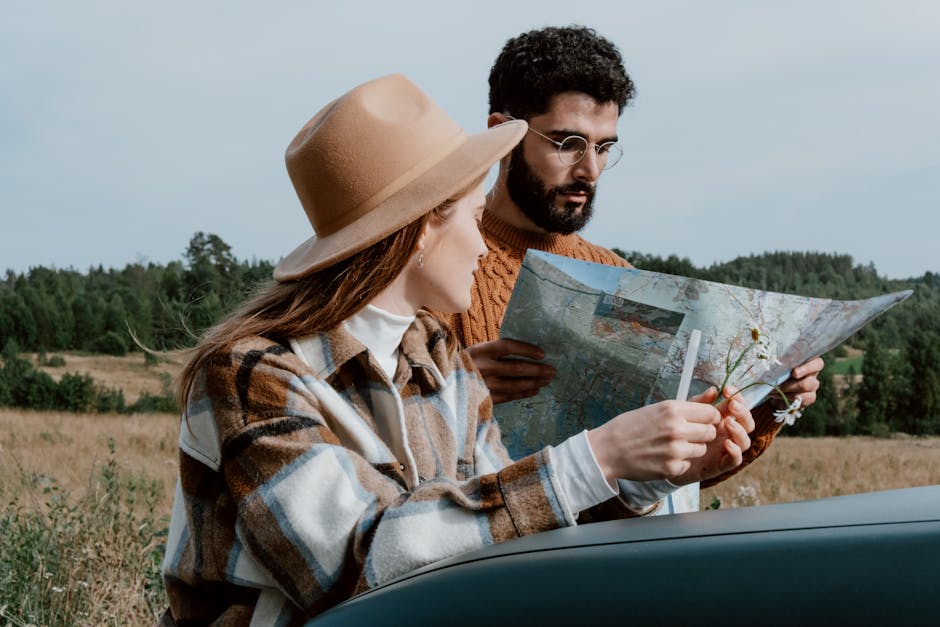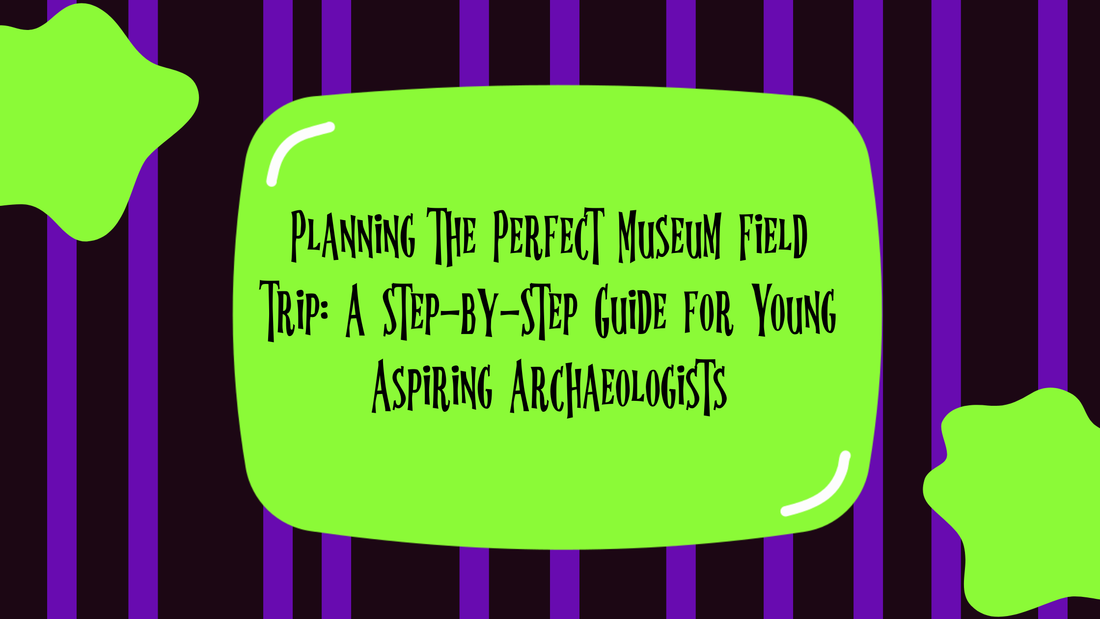As an affiliate, I earn from qualifying purchases, but this doesn't affect the reviews or recommendations—your trust is important to me!
Planning the Perfect Museum Field Trip: A Step-by-Step Guide for Young Aspiring Archaeologists

If You've Ever Watched in Awe As a Child's Face Lights Up...
If you've ever watched in awe as a child's face lights up when they first touch a fossil, or listened to their excited chatter about the ancient civilizations they've been learning about at school, you'll understand the magic of a museum field trip. Museums breathe life into the lessons of history, making them the ultimate venue for field trips packed with hands-on learning. They're particularly thrilling for young aspiring archaeologists.
The scent of ancient treasures, the sight of age-old artifacts, and the chance to dig into interactive exhibits all feed into their fledgling passion for studying the past. In this blog post, we'll be exploring step-by-step planning to organize the most engaging museum visit for those mini-Indiana Joneses.
From Pre-field Trip Preparation to Picking the Right Archaeological Museums
From pre-field trip preparation to picking the right archaeological museums, we'll serve as your museum guide for a memorable educational journey. It's high time we dusted off our paintbrushes and began our hands-on adventure into the history-filled world of archaeology!
Before Diving into the Archeological World
Consider the basics of field trip planning. Aspiring archaeologists should do a little research. Before setting foot in a museum, encourage your young Indiana Jones to surf the web! Find out what exhibits are on display at your local museum. Look for kid-friendly museums that cater specifically to your child's passion. Most museums have an educational section on their websites dedicated to showcasing current and upcoming exhibits. If your child is intrigued by the idea of mummified specimens or captivated by early human tools, they'll be thrilled to extract as much information as possible on these topics.
Entering the Realm of Hands-on Learning Experience
Now that we’ve gone under the hood of pre-trip preparation, the next stage involves yet another exciting element of the museum field trip – the hands-on learning experience. Remember, museums are much like interactive classrooms. They offer the benefits of tactile learning, making information absorption fun, and engaging. To enhance this, call ahead and inquire about hands-on exhibits, workshops, or classes that might be available for young visitors. Alongside viewing intriguing artifacts, young archaeologists often relish the chance to get busy with practical archaeology. Many museums offer programs where kids can try their hand at mock digs, artifact reconstruction or even pottery-making sessions!
Your Role as a Field Trip Guide
Your role as a field trip guide is crucial in crafting an engaging museum visit. Museums have a knack for sparking curiosity, but sometimes children might overlook an important artifact, simply because it's not shiny enough, or it's too high on a shelf. For this reason, ensure that you familiarize yourself with the museum layout beforehand so you can point out areas of interest. Also, have a rough plan gleaned from your research, which can easily adapt to the child's whims and energy levels on the day.
Creating a Field Trip Checklist
Another essential element in planning your field trip is putting together a field trip checklist. Admit it; we’ve all forgotten about an item on the day of an event. Incorporate engaging activities like a ‘museum scavenger hunt’ in your checklist to keep the kids focused and engaged throughout the museum visit. Also, don’t forget practical considerations like packing a bag with snacks, water, a camera, and sketchpads for any sudden bursts of archaeological inspiration!
Conclusion
As we've seen, when it comes to planning a field trip to a local museum for mini-archaeologists, there's more to consider than simply showing up on the day. But with some pre-visit research, a focus on hands-on learning, imaginative guiding, and a well-prepared checklist, you'll turn the museum visit into an educational journey your little one will never forget.

```html
25 Essential Recommendations for a Successful Museum Field Trip
- - Research and select relevant museums in your area that cater to young archaeologists
- - Ensure the museum houses exhibits that align with the interests of your young archaeologists
- - Check out virtual tours of the museum online for preliminary planning
- - Plan the trip on a less crowded day to maximize learning opportunities
- - Inquire about guided tours and archaeology related workshops or events
- - Coordinate with the museum staff about your visit and the children's age group/interests
- - Schedule a date for the trip, giving ample time for preparations
- - Create anticipation: discuss the trip with your children highlighting what they can learn and see
- - Plan the itinerary in detail, including breaks for snacks and rest
- - Teach basic museum etiquette beforehand
- - Gather and pack essential items: notepads, pencils, hand sanitizer, water, snacks, camera
- - Encourage children to read up on related topics prior to the visit
- - Plan interactive activities like a scavenger hunt or a quiz
- - Instil in children the significance of preserving artifacts and not touching exhibits without permission
- - Plan for post-visit activities to reinforce what they learn
- - Customize the museum experience according to each child's interests
- - Consider using audio tours to make the trip more informative and interesting
- - Ensure to have adequate adult supervision during the trip
- - Prepare for emergencies: pack a first aid kit and ensure at least one adult is trained in CPR and first aid
- - Arrange comfortable transportation, considering traffic and parking situations
- - Plan the food precisely: check if the museum has a cafe, or if outside food is allowed
- - Seek feedback from children post-visit to make future trips more educational and fun
- - If possible, arrange for a meet-and-greet with an archaeologist
- - Document the visit: appoint a trip photographer to capture the learning and fun moments
- - Foster an ongoing learning process: assign related projects or encourage further reading post the field trip

Taking Our Little Adventures to the Museum
Taking our young ones to the museum can be an extraordinary adventure into the past, an immersive learning experience that goes beyond what any textbook can offer. It's a journey that should be embarked upon with careful planning and a lot of passion.
For a young aspiring archaeologist, it gives them a chance to step into the shoes of Indiana Jones for a day, experiencing the tools, the techniques, and the tantalizing mysteries of the ancient world for themselves. Yes, it requires a bit more effort than other outings, but the pay-off in terms of your child's joy, enlightenment, and the potential to ignite a lifelong love and respect for archaeology, are priceless.
Let's Start Our Adventure Together!
So, put on your adventure hat, grab your field notebook, and let's blaze trails into our wonderful, artifact-filled past together!
Other Stuff You May Like:
```html
25 Essential Recommendations for a Successful Museum Field Trip
- - Research and select relevant museums in your area that cater to young archaeologists
- - Ensure the museum houses exhibits that align with the interests of your young archaeologists
- - Check out virtual tours of the museum online for preliminary planning
- - Plan the trip on a less crowded day to maximize learning opportunities
- - Inquire about guided tours and archaeology related workshops or events
- - Coordinate with the museum staff about your visit and the children's age group/interests
- - Schedule a date for the trip, giving ample time for preparations
- - Create anticipation: discuss the trip with your children highlighting what they can learn and see
- - Plan the itinerary in detail, including breaks for snacks and rest
- - Teach basic museum etiquette beforehand
- - Gather and pack essential items: notepads, pencils, hand sanitizer, water, snacks, camera
- - Encourage children to read up on related topics prior to the visit
- - Plan interactive activities like a scavenger hunt or a quiz
- - Instil in children the significance of preserving artifacts and not touching exhibits without permission
- - Plan for post-visit activities to reinforce what they learn
- - Customize the museum experience according to each child's interests
- - Consider using audio tours to make the trip more informative and interesting
- - Ensure to have adequate adult supervision during the trip
- - Prepare for emergencies: pack a first aid kit and ensure at least one adult is trained in CPR and first aid
- - Arrange comfortable transportation, considering traffic and parking situations
- - Plan the food precisely: check if the museum has a cafe, or if outside food is allowed
- - Seek feedback from children post-visit to make future trips more educational and fun
- - If possible, arrange for a meet-and-greet with an archaeologist
- - Document the visit: appoint a trip photographer to capture the learning and fun moments
- - Foster an ongoing learning process: assign related projects or encourage further reading post the field trip











